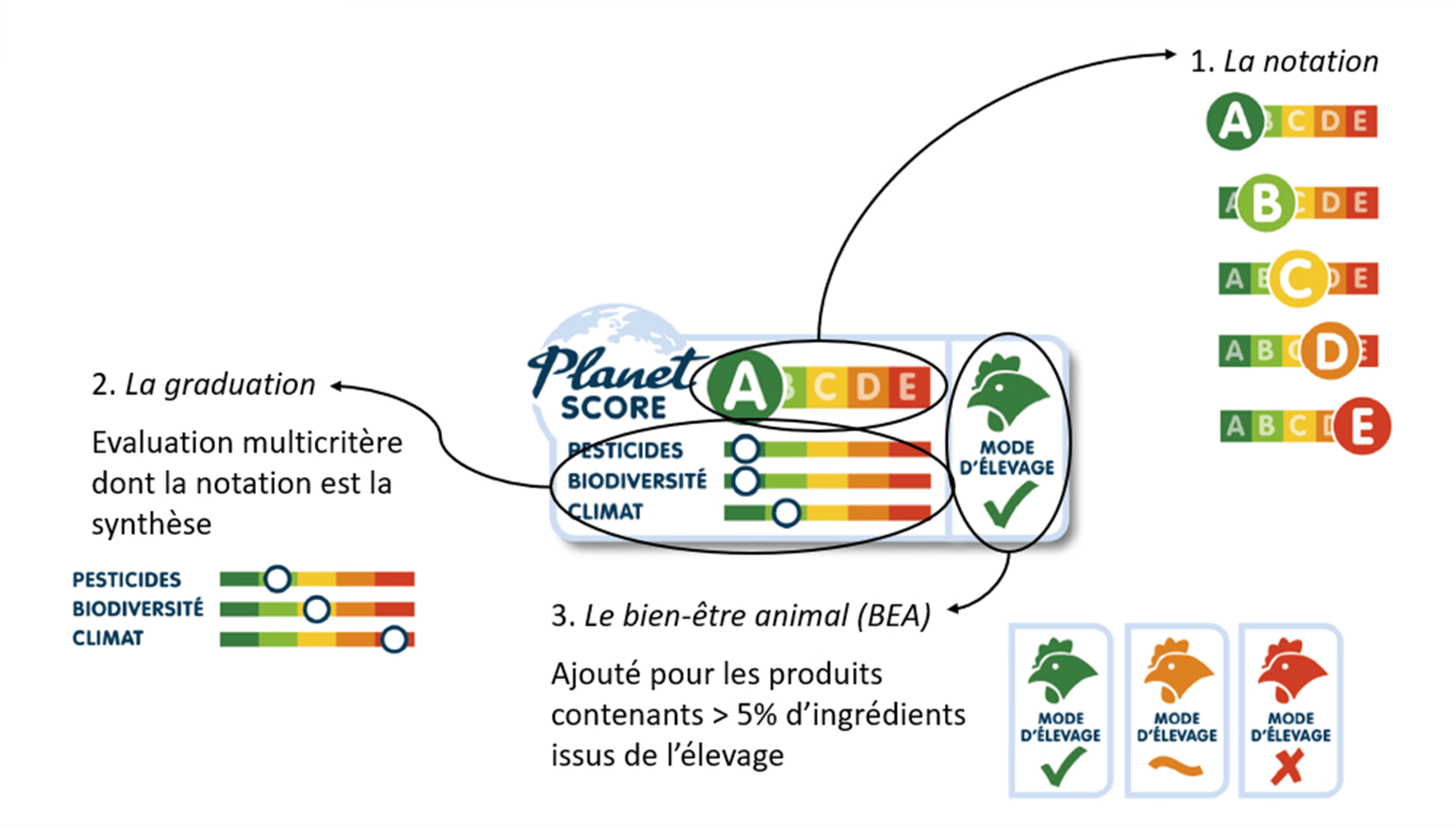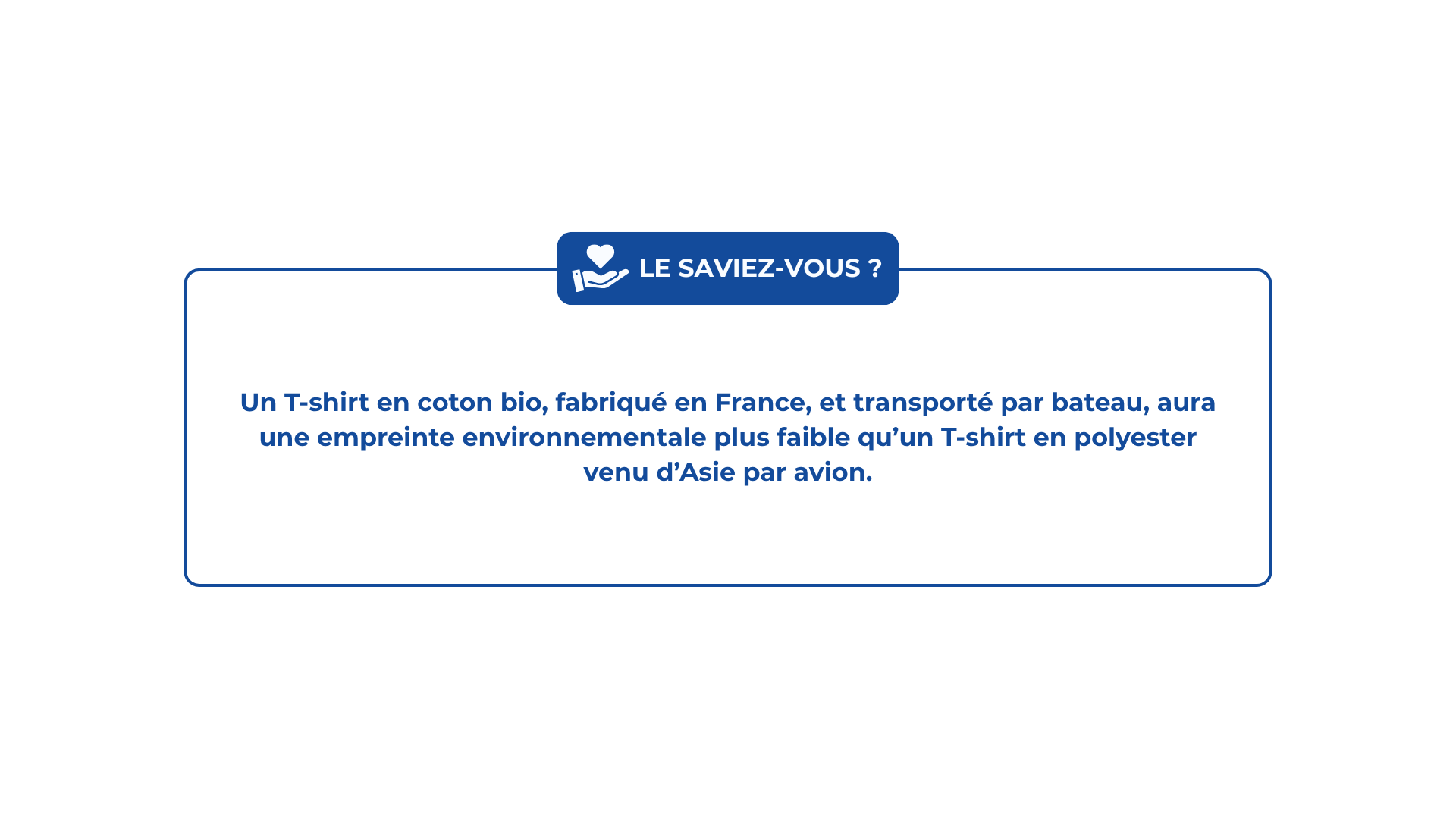What you need to know about environmental labelling

L’affichage environnemental devient un outil clé pour guider les consommateurs vers des choix plus responsables. Il informe sur l’impact environnemental d’un produit ou d’un service tout au long de son cycle de vie.
Ce dispositif, soutenu par le décret d’application de la loi Climat et Résilience en France, s’inscrit dans une démarche de transition écologique. Il concerne d’abord des secteurs comme le textile (notamment les vêtements), l’alimentaire ou encore les produits de grande consommation. L’objectif : rendre visible le coût environnemental d’un produit, avec un score simple, compréhensible et comparable.
À l’échelle européenne, la Commission européenne encourage aussi le développement de cet affichage environnemental dans sa marche vers la neutralité carbone. Des initiatives comme l’Éco-score, le Planet-score, ou encore des outils proposés par l’ADEME, reposent sur une méthodologie rigoureuse, fondée sur l’analyse du cycle de vie.
Pour les structures, c’est un nouveau défi, mais aussi une opportunité : mieux connaître l’empreinte environnementale de leurs produits, valoriser l’éco-conception et répondre aux attentes croissantes du public.
Contents
Understanding environmental labelling: what does it mean?
📢 A response to the challenges of environmental transparency
Today's consumers want to know what they're buying. Beyond price or quality, a product'senvironmental impact is becoming a key criterion, reinforcing the demand for sustainability. This is whereenvironmental labelling comes in, supported by tools like ecobalyse to measure concrete results.
This is a system that provides transparent information on the environmental impact of a product or service. The system is based on data measured throughout the product's life cycle: extraction of raw materials, manufacturing, transport, use and end-of-life.
One example: the Planet-score, developed in France with the support ofADEME, indicates the effects of a food product on climate, biodiversity, pesticides and animal welfare. It is already being tested by chains such as Carrefour, Franprix and Biocoop.

Source : Picard
🏛️ A system backed by law and Europe
L’affichage environnemental est encouragé par la loi Climat et Résilience, votée en France en 2021. Il est d’abord testé dans des secteurs à fort impact comme le textile, l’alimentaire ou les produits d’hygiène.
Depuis 2022, les entreprises peuvent rejoindre des programmes d’expérimentation volontaires portés par l’ADEME. L’objectif est d’évaluer les méthodes de calcul et de préparer une généralisation à l’échelle nationale.
En parallèle, la Commission européenne travaille sur un cadre commun, appelé Product Environmental Footprint (PEF). Il vise à harmoniser l’ACV des produits à l’échelle européenne. Cela permettra d’éviter le greenwashing et d’avoir un langage commun pour tous les secteurs.
Dans le secteur textile, par exemple, plusieurs marques comme Decathlon ou Petit Bateau testent déjà l’affichage environnemental sur leurs produits textiles, principalement les vêtements.
How to sustain and strengthen your business through a successful low-carbon trajectory.
How is a product's environmental score calculated?
🔍 Methodology and key indicators
Environmental labelling is based on a scientific methodology. The main method used isLife Cycle Assessment (LCA). This method assesses the environmental impact of a product from manufacture to end-of-life.
Among the criteria taken into account:
- greenhouse gas emissions ( climate impact)
- water and energy consumption
- air and soil pollution
- waste production
- depletion of natural resources
Each product then receives a score or rating, sometimes visual, such as the Eco-score (A to E). This score helps consumers to quickly compare several similar products.
For example, a French yogurt, with recyclable packaging, will have a lower environmental cost than an imported, over-packaged yogurt produced from processed milk.
Other systems, such as Planet-score, add criteria not taken into account in conventional LCA, such as pesticide use or impact on biodiversity.
🧩 The role of companies in data collection
Reliable environmental scores require accurate data. This is a real challenge for companies. They need to collect information along the entire value chain: raw materials, transport, packaging, manufacturing and end-of-life.
In the textile sector, this may involve tracing cotton cultivation, dyeing, manufacturing and shipping of the final product.

Some companies structure their approach using appropriate tools. For example, a climate strategy supported by a precise diagnosis enables better measurement of greenhouse gas emissions linked to each stage. This is what is offered by the Decarbo'Target® method, a single-criteria approach focused on CO₂ emissions, used by several industrial players to make their life-cycle analysis more reliable.
At the same time, in complex supply chains such as the textile or food industries, structuring the collection of supplier data becomes essential. Solutions such as Decarbo'Supply® centralize this information to ensure more accurate environmental labelling.
These approaches also facilitate the implementation ofeco-design: rethinking a product to reduce its impact on the environment, right from the design stage.
What's at stake for businesses and consumers?
🌱 A differentiation opportunity for committed brands
Environmental labelling is not a constraint. It's also an opportunity for companies to stand out from the crowd. Brands that adopteco-design approaches, reduce their environmental costs, or communicate transparently inspire confidence.
For example, Léa Nature already displays the Eco-score on some of its food products. Decathlon, for its part, indicates the carbon impact of several items of clothing on its website. These initiatives show that it is possible to take action, even in complex sectors.
But beware of greenwashing. A misleading or incomplete display can damage a company's image. That's why it's essential to rely on a rigorous method and verifiable data.
Some companies reinforce their strategy with tools such as Decarbo'Target®, which help them set realistic reduction targets and better manage their ecological transition. This ensures consistency between their commitments and the environmental labeling they promote.
🛒 A choice tool for consumers
Les consommateurs sont de plus en plus attentifs aux impacts environnementaux de leurs achats. Un bon affichage environnemental leur permet de faire des choix éclairés, simples et rapides.
Dans les rayons, ils peuvent comparer deux produits similaires : un fromage noté B avec un faible impact carbone, contre un autre noté D, fabriqué à l’autre bout du monde. Même chose pour un jean produit en circuit court, moins polluant qu’un modèle issu de la fast fashion.
L’éco-score, le Planet-score, et les labels environnementaux deviennent des repères utiles. Mais ils ne remplacent pas l’engagement profond des entreprises. Ces outils doivent être associés à des actions concrètes sur le terrain, dans les usines, les filières, les transports.
Certaines organisations structurent aussi leur chaîne de valeur pour mieux maîtriser ces impacts. Par exemple, la solution Decarbo’Supply® aide à suivre l’empreinte carbone des produits et services, en s’appuyant sur les données des fournisseurs. Cela renforce la qualité de l’information transmise aux consommateurs.
Pour les consommateurs, c’est un repère clair. Pour les organisations, c’est un outil de progrès. Il pousse à mieux connaître l’empreinte environnementale de ses activités, à repenser ses méthodes, à innover.
Mais pour que ce dispositif fonctionne, il faut des données fiables, une méthodologie transparente et une réelle volonté de changement. Des solutions comme la Decarbo’Solution® permettent justement d’accompagner les entreprises dans cette démarche, en alliant précision, action et cohérence.
Sources
- https://bigmedia.bpifrance.fr/nos-dossiers/eco-score-et-planet-score-indicateurs-dimpact-environnemental-des-produits
- https://www.actsandfacts.org/actualites/laffichage-environnemental-chez-decathlon
- https://www.quechoisir.org/nos-combats-le-planet-score-pour-un-affichage-environnemental-des-aliments-fiable-et-comprehensible-n109342/
- https://www.ecoconso.be/fr/content/leco-score-pour-identifier-les-aliments-ecologiques
- https://engagements.decathlon.fr/levaluation-environnementale-de-nos-produits








